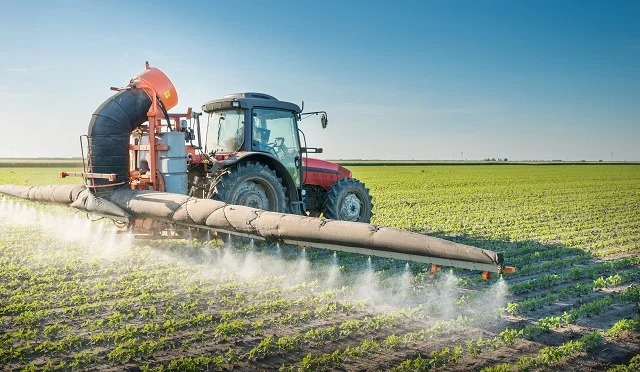
The ambitious project is a build, operate and transfer partnership between government represented by the Agricultural Rural Development Authority (Arda) and three investment partners –– Greenfuel Investments, Rating Investments and Macdom Investments. The 20-year pact was signed in February 2009.The project, the biggest so far in Africa, is promoted by business mogul Billy Rautenbach through the three investment partners and is modelled along the lines of ethanol plants in Brazil.The massive project, according to the general manager of the three investment partners, Graeme Smith, would have three ethanol plants –– two at Macdom Chisumbanje and one at Rating Middle Sabi.Chisumbanje and Middle Sabi would produce sugarcane over 50 000 hectares for use by the three plants to produce not only ethanol, but also stockfeed.“On completion of the project, we will produce between 2,5 million and 2,8 million litres of ethanol daily,” Smith told the Zimbabwe Independent during the tour of the project last Saturday. “We will also generate 120 megawatts of electricity of which we will use 20 megawatts and the remainder will be fed into the national grid.”The production of such volumes of ethanol would be expected to end the country’s importation of petrol as consumers convert to the use of the cheaper fuel. Excess ethanol-petrol would be exported, bringing into the country much-needed foreign currency for social and economic development.Zimbabwe’s daily petrol requirements are slightly above one million litres.The initial phase of the project, the construction of the first ethanol plant by Greenfuel Investments at Chisumbanje, is expected to be completed in March. Progress towards completion is 35% with civil engineering works for the plant’s foundations having been done, the boiler section is 60% and towers are now several meters above the ground.The plant would be made up of four sections, the mill, generating plant, the boiler, and the ethanol distillery chamber.“Each section has a civil, mechanical and electrical engineering phases. The boiler section is very critical because the cane will be received into the mill of crushing,” Smith said. “The resultant bagasse is then fed into the boiler through a conveyor belt to burn and produce steam to generate electricity that powers the whole plant while the surplus is fed into the national grid.” On completion of the first plant, 350 000 litres of ethanol and 18 megawatts of electricity would be produced daily to meet over 30% of the country’s petrol requirements. The electricity generated would be enough to power Manicaland on completion of all the three plants.The first phase was initially scheduled to be completed last month, but progress stalled when plant parts imported from Brazil did not reach Zimbabwe on time because of industrial action at South African ports.This delay saw about 100 000 metric tonnes of sugarcane harvested being sold to Triangle for sugar production.“We are currently sending some of the cane to Triangle to boost their raw cane supplies while replanting some of it in order to expand our own hectarege under the cane,” Smith said.About US$270 million has so far been invested in the gigantic project.The construction of the plant and agricultural activities at both Chisumbanje and Middle Sabi have created 3 000 jobs, most of them from the local community.Smith said the successful completion of the project, which includes the setting up of the two other plants, would depend on the construction of Kondo Dam in Chipinge to irrigate 30 000 hectares of sugarcane.“The dam will be two and a half times bigger than Lake Mutirikwe,” Smith said. “We will need the support of government and both local and foreign investors to build the dam.”Lake Mutikwe in Masvingo has a capacity of 1 378 million cubic metres, a catchment area of 3 900 square kilometres and a surface area of 9 105 hectares.Besides transforming the country’s energy sector, the massive project would also benefit the local community.Macdom is establishing irrigation blocks for small-scale irrigation for farmers who were affected by the project. The farmers had for long before the commencement of the ethanol project been using the Arda land after the authority went broke.Instead of ejecting the settlers, Macdom ensured that for “every block of land developed for cane towards the project, a significant percentage of the land would be developed for small scale irrigation by the farmers.“The water supply in terms of pumps and canal will be completed this month and the 10% of land for irrigation for them (farmers) in the new development area is being demarcated and will be prepared along with our fields,” Smith said. “We anticipate this to be complete by the end of December if the rains hold off or early in the new year.”At Middle Sabi, Rating pioneered a community small-scale irrigation rehabilitation programme that has resulted in the refurbishment of pumping units and waterways for 18 schemes covering 1 863 hectares divided into small plots for 2 861 farmers. The rehabilitation programme cost US$500 000.“The amount of money invested in resuscitating the pump stations and whole irrigation system here is nothing compared to the way in which livelihoods in the community we operate in will be changed for the better,” said Rating Middle Sabi estate manager Glen Mirams. “Once there is water flowing from Sabi River into the canals, the community survives on its own and makes money through selling their produce to wholesalers of their choice… The Sabi River and a functional irrigation system is the lifeline of the area.”As a result of the project, Checheche Growth Point has since applied for town status in anticipation of a boom in business as a state-of-the-art shopping mall and a residential area is in the offing.
Constantine Chimakure











